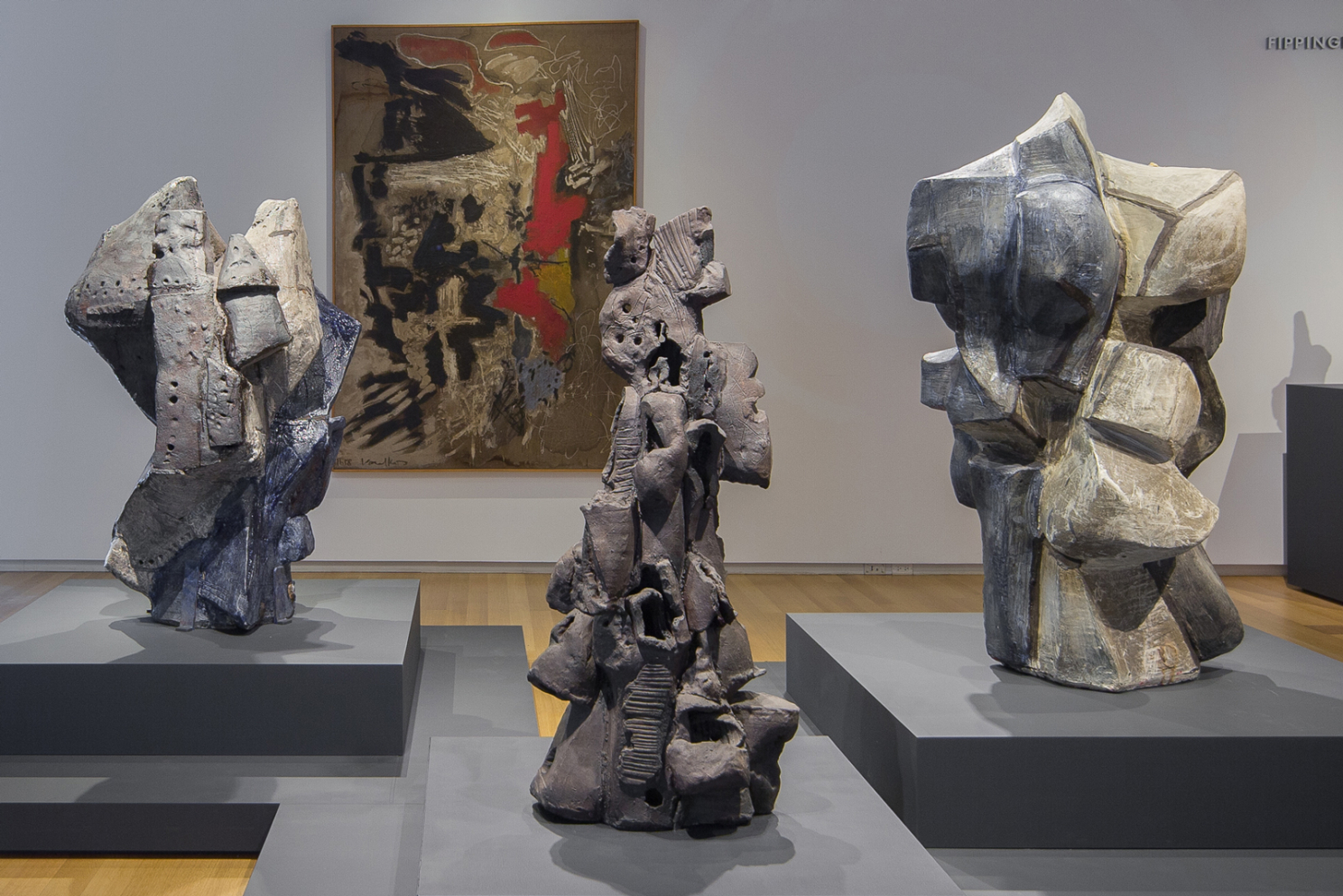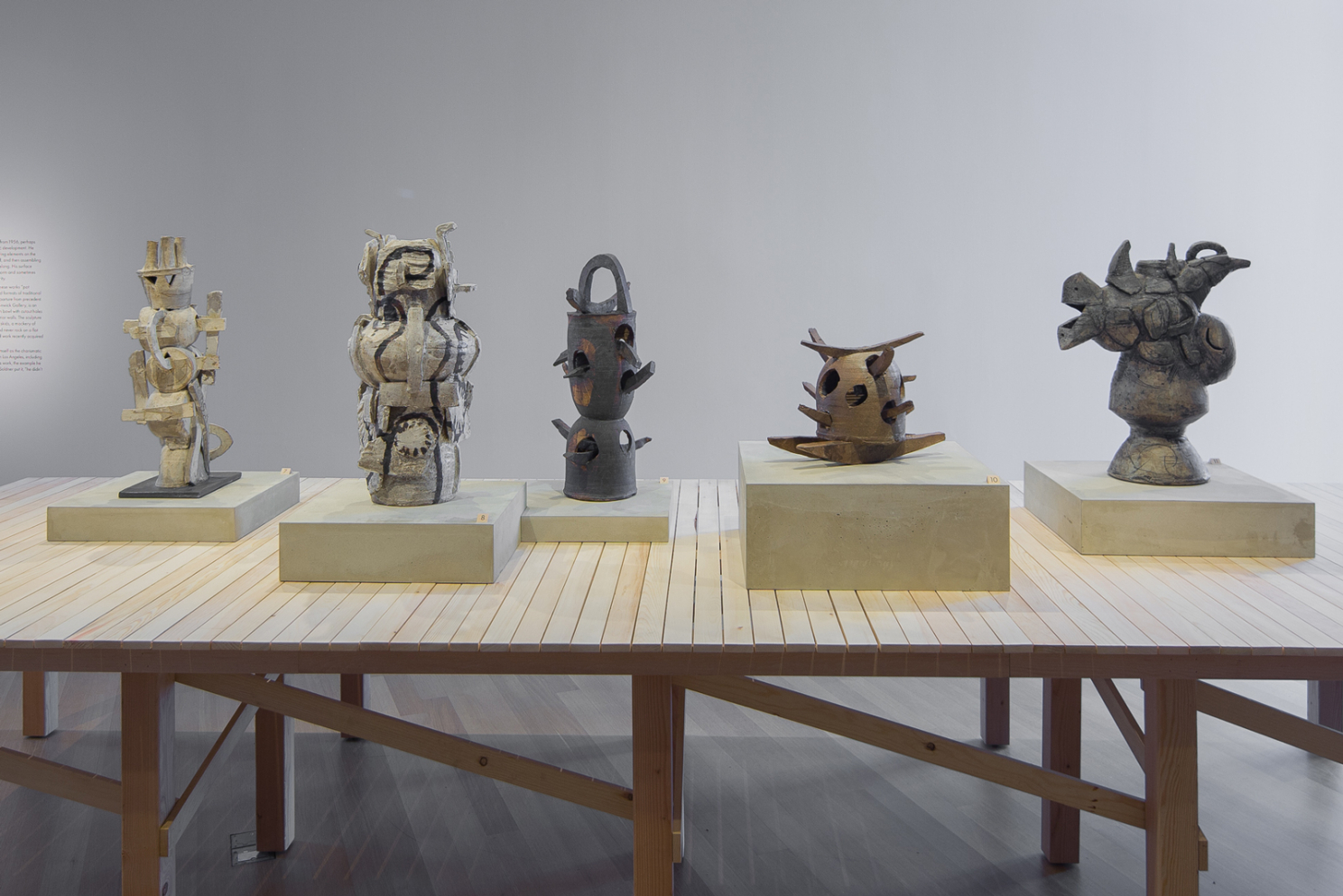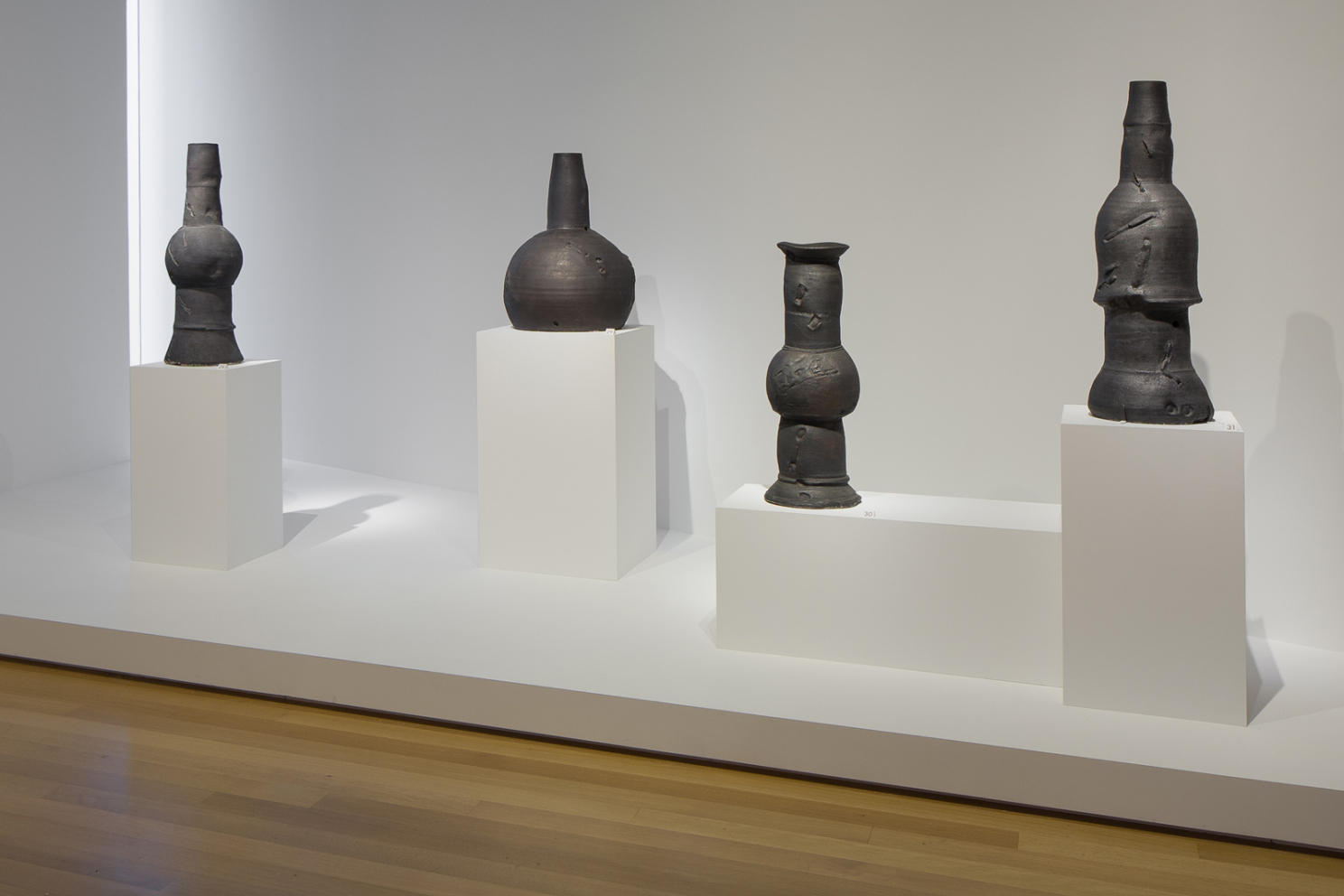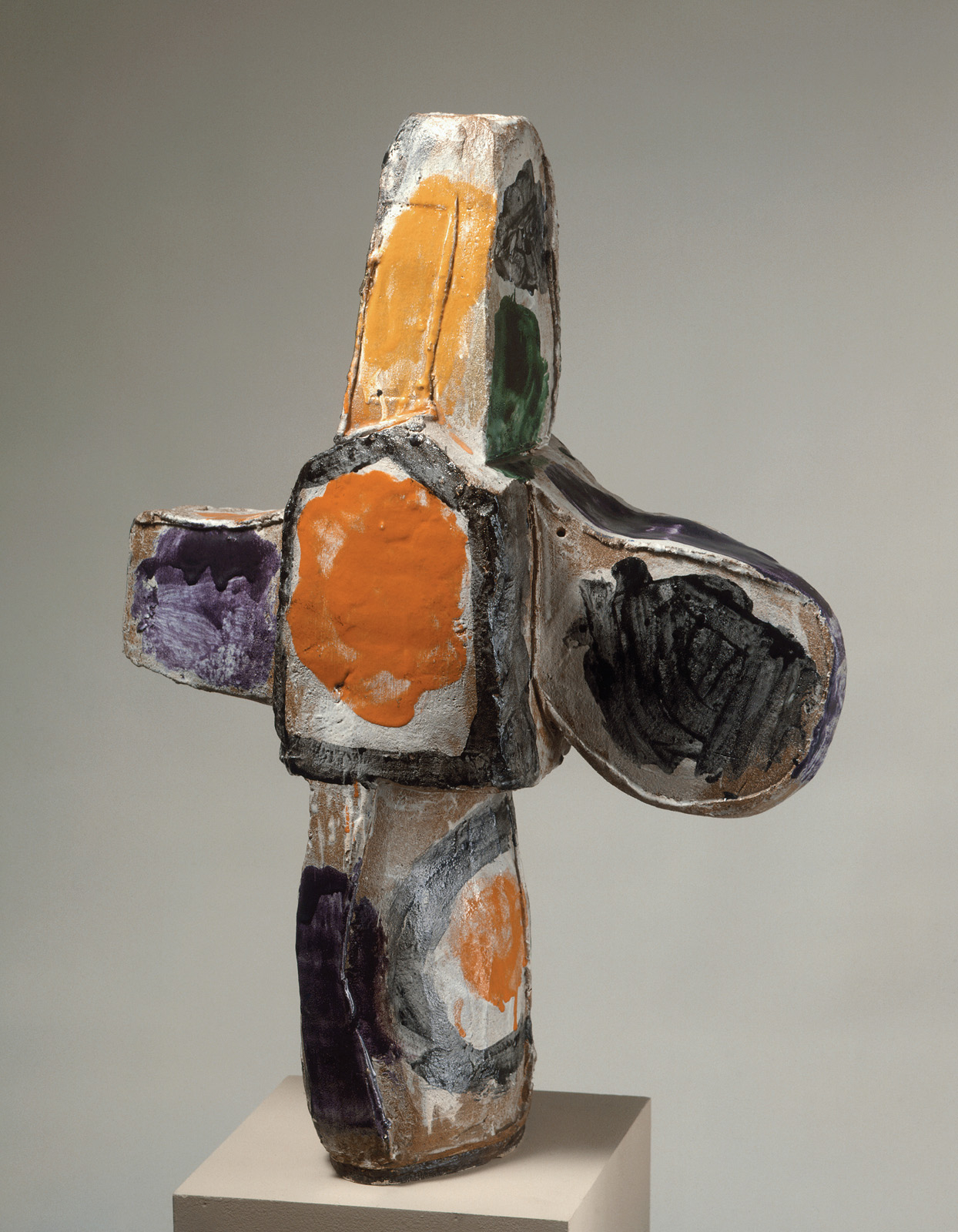Interview: Glenn Adamson and Barbara Paris Gifford on 'Voulkos: The Breakthrough Years'
The Museum’s current exhibition Voulkos: The Breakthrough Years explores the early works of midcentury ceramist and sculptor Peter Voulkos. But what makes Voulkos’s early work so interesting and relevant right now? We talked to two of the show’s curators about the artist and the exhibition.
Voulkos: The Breakthrough Years is on view through March 15, 2017.

What made you want to do this exhibition?
Glenn Adamson: While Voulkos is widely acknowledged as the most transformative figure in the history of modern ceramics, it has been some time since his work received any critical attention. The last really substantial show to focus on his work was his retrospective at MAD, way back in 1978. Given the amount of contemporary interest in ceramic art, it seemed timely to revisit this important figure.
Where did the inspiration for the exhibition come from? Where did its roots start to take shape?
Adamson: As a scholar of craft history with a particular interest in ceramics, I had wanted to do a show on Voulkos for years—since I first encountered the artist’s work as a museum intern! Another curator of the exhibition, Andrew Perchuk of the Getty Research Institute, was one of the leaders of the Pacific Standard Time initiative, a coordinated series of exhibitions on postwar Californian art. Voulkos had a tremendous impact on artists working in all media in Los Angeles in the 1950s, and then in the Bay Area from the 1960s on. Having come to understand Voulkos’s crucial role, he wanted to do a project focusing specifically on his breakthrough work.

In your mind, what makes Voulkos relevant at this moment in time?
Adamson: Many artists today are using clay in their work, often in combination with other media, just as Voulkos did. Among them are several innovative artists whose aesthetics bear some resemblance to Voulkos’s intentionally disruptive, but still compositionally intelligent approach. Of particular importance for the project have been Arlene Shechet and Ruby Neri, who both contributed to the associated catalogue. Others of note include Nicole Cherubini and Sterling Ruby. It seems to us that many artists are attracted to the medium for the same reason that Voulkos was: It can be used to do so many things, but is particularly good at capturing decisive, expressive marks. Often artists speak of it as a kind of painting in the round, and certainly Voulkos himself understood his work in clay as being strongly related to his own work in oil on canvas.
In what ways did Voulkos reinvent techniques in clay?
Barbara Paris Gifford: Voulkos broke all the rules he had learned as a potter. He was trained as a classical potter by Frances Senska in Montana in the late 1940s and early 1950s, and he was so adept at clay that within just a few years he was placing first in most of the ceramics shows he was in. He was the person to beat when it came to functional potting, and he developed a strong reputation, but he saw that what he was doing could easily be produced by machines and this threw him into a depression. In the summer of 1955, he started experimenting with the ceramics vocabulary he knew so well; instead of making plates to hold food, he started using them as parts in his clay assemblages. He turned bowls upside down, put holes in them, and in the case of Rocking Pot (1956), put them on gliders to make them rock. He combined thrown and slab elements, a decision an experienced potter would never make. The more rules he broke, the clearer his artistic voice became and the result was that he pushed the clay medium into the realm of sculpture. He also experimented by applying textile wax-resist techniques to his decorative work, using cut-outs akin to Matisse’s to add relief elements, and trying out different painting styles—most notably the drip technique from the Abstract Expressionists. Craftspeople were not supposed to look outside their medium for inspiration, but it was exactly this that developed Voulkos as an artist.

Imagine you’re a visitor to the Museum and you don’t have any background on Voulkos. How would you approach the exhibition? What work might you start with and why?
Adamson: The show is organized chronologically, and is definitely best experienced in order. One of the great insights this gives you is that Voulkos completely knew what he was doing as a potter. The very first object is a beautiful lidded tureen, which would look elegant on any dining table. Yet within three years he has completely reinvented himself, and his medium. The speed of the breakthrough is breathtaking, and that restless energy continues throughout the rest of the show. Interestingly, the 1968 "blackwares" mark a return to work of pot-like scale and shape. It’s as if Voulkos has gone out on a voyage of exploration and finally returned back to where he started, but with an awareness of much greater possibilities. By opening up those horizons he paved the way for so many others, not only his own students, but anyone working in the medium of clay.
Which of Voulkos works do you find the most interesting, as a Voulkos expert yourself?
Adamson: Voulkos was very prolific in his “breakthrough” period so we had a lot to choose from, which means the works in the show were very carefully selected. There are some definite standouts, including Rasgeado (1956), one of his first pieces constructed from traditional pottery elements like cylinders and handles, and an untitled work of that same year that recently resurfaced and was acquired by the Philadelphia Museum of Art. It is an achievement to have brought the two monumental sculptures Little Big Horn and Sitting Bull together again—they really seem like pendant works to one another. And we have spent a lot of time thinking about his “blackwares” from 1968, which brought his experimental period to a suitably dramatic close.

What inspired the exhibition design for Voulkos: The Breakthrough Years?
Gifford: We spent a lot of time researching archives and looking at historical photographs of Voulkos’s early exhibitions. Much of the exhibition design that you see in this show is inspired by those photographs, but expressed in a more contemporary manner. For example, it was common in the 1950s to show ceramic work influenced by Japanese pottery on gravel surfaces. Voulkos’s work was shown at Bonniers this way; even the Picasso Sculpture show at the Museum of Modern Art last year showed a portion of his work from this period in a sandbox-like display. For our show, Voulkos’s early pots are displayed on a modern-looking table filled will small rocks, their colors chosen to look like stones found in the streams of Montana. They are meant to echo the color of the clay on display.
Another example of archival inspiration was the low tables showing 5000 Feet (1958), Cross (1959), and Annon (1959). These tables are in imitation of a pedestal Voulkos and his studio mate, John Mason, used to support their massive ceramic sculptures in the late 1950s. Voulkos must have liked this pedestal as he used it in his Pasadena Art Museum show in 1958. Voulkos’s longtime assistant came to our show, saw the pedestal, and exclaimed that it would have been a favorite highlight for the artist. It was an emotional moment for her to see this table that had been so personal to him.
Can you talk a little bit about the historical relationship between Voulkos and MAD?
Gifford: Voulkos had a close relationship Aileen Osborn Webb, who founded the Museum, and Paul J. Smith, who was the director from 1963 until 1987. While Webb seemed to prefer Voulkos’s functional work, collecting it herself and ordering his lamp bases for the lighting in the Museum’s first location, she always supported his artistic journey. The Museum gave him his first retrospective show in 1978, and Voulkos’s work was included in our most far-reaching exhibition, Objects USA, which toured to 30 museums nationally and abroad beginning in the late 1960s. Voulkos’s Cross (1959) was used for the publicity surrounding it. MAD continued to support the artist through the rest of his life, which ended in 2002. We have almost a dozen of his pieces in our collection, which is quite a lot for us from one single artist.
Subscribe
Join our mailing list.
Join
Become a member and enjoy free admission.
Visit
Find out what's on view.